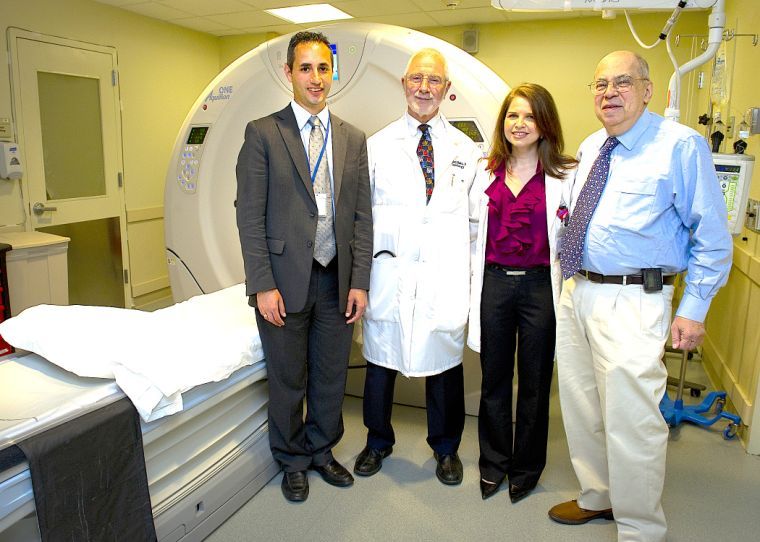For the last 42 years, Dr. James Naidich has been a practicing radiologist at North Shore University Hospital in Manhasset, using digital imaging as a way to diagnose and treat patients.
But after the 73-year-old underwent a cardiac CT scan on April 23 using North Shore-LIJ Health System’s newly-acquired 640 Slice CT scanner, one of three in the United States and the only one in the northeast, it was the doctor who now needed treatment.
The scan revealed severe blockages in all three arteries of Naidich’s heart, captured on three-dimensional, high-resolution images taken during the course of a single heart beat, which North Shore-LIJ officials equate to less than one-third of a second.
“I’m not a child, my next birthday will be 74,” Naidich said by phone Monday. “It was certainly a possibility that they’d find things. My chief thought was that the cardiac scan would not get any findings, but I was hoping they’d be able to [unblock the arteries] without open heart surgery.”
The scanner, developed by Toshiba America Medical Systems, was unveiled last week at a press conference at North Shore University Hospital.
According to a press release issued by North Shore-LIJ Health System, the scanner uses the most advanced CT scan technology available and exposes a patient to significantly lower levels of radiation.
Naidich said the scan, taken on a whim during an annual examination by his cardiologist, Dr. Stanley Katz, the senior vice president of cardiovascular services at the North Shore-LIJ Heath System, likely caught a potential heart attack before the narrowings in his coronary arteries became completely blocked.
“He said, ‘Your last EKG is not normal but has not changed since the prior exam,’ and ‘See me in six months, and then, ‘Oh, by the way, we’re getting this new machine in, would you like to try it out and help us calibrate it,’ and I said yes,” Naidich said. “One week later I underwent the examination and immediately suppressed the memory of it, only to see him come wandering around searching for me, which is unusual and not something I welcome. He told me that he saw some things that were suspicious and confirmed the presence of some significant narrowing of my coronary arteries.”
According to the latest data from the Centers for Disease Control, heart disease is the leading cause of death in the United States and will likely soon be the leading cause of death in the world, causing 600,000 annual deaths in the United States.
“There were some other tests that were done three or four years ago that may or may not have shown anything and then we did a different kind of test, which didn’t confirm the findings on the imaging study with an inferior machine,” Naidich said. “It’s enormously powerful. In the 40-plus years I’ve been a radiologist, there’s been an enormous revolution in imaging, enormous advances in medical images. It’s one of the important reasons why people live longer these days. We can catch illnesses quicker and treat them.”
A major benefit of the scanner, which costs $2.5 million to $2.8 million, is that it can be used in the emergency room to rule out heart attacks and other problems in low to moderate-risk patients who have chest pain, and can often avoid the need for patients to be admitted to the hospital, the release said.
“With the detailed 3-D images of the heart, we were able to look deep inside coronary arteries to detect evidence of disease and to identify any build up of calcium,” Katz said in a statement. “The CT images help cardiologists make a more accurate diagnosis and select the best course of treatment.”
Katz performed an angioplasty on April 30 to unblock Naidich’s arteries using stents, which Naidich said resemble Chinese finger traps that hold open the narrowings in the arteries and restore blood flow to the heart.
“Were we not to have recently acquired this machine, I would not have had this examination and it actually benefitted me in taking care of an impending heart attack,” Naidich said. “These were pretty tight narrowings, but we caught it before one of these narrowings became a complete blockage, which would have led to a heart attack.”



